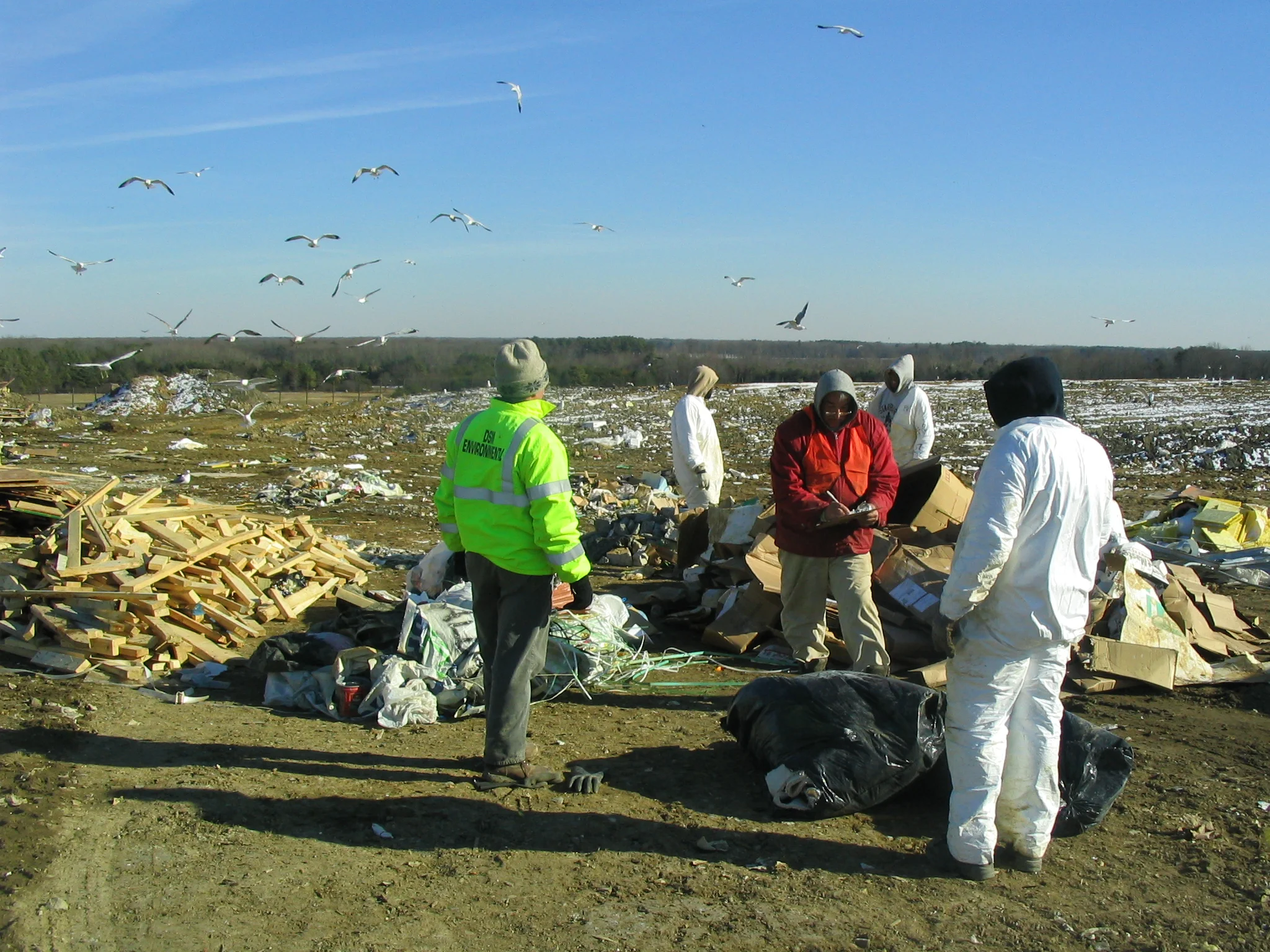Featured Projects for Waste Characterization & Recycling
Vermont Department of Environmental Conservation
Montpelier, Vermont
State of Vermont Waste Composition Studies for Municipal Solid Waste and Construction and Demolition Debris
DSM completed the first ever waste composition study for the State of Vermont in 2002. The study included statistically valid sampling of residential wastes delivered to the Waste USA landfill in northern Vermont, and the WSI/Chittenden District transfer station in Burlington, Vermont. In addition, DSM conducted sampling of the composition of selected commercial generators of wastes and visual analysis of the composition of Construction and Demolition (C&D) wastes delivered to the landfill/transfer station. The purpose of the project was to provide information on what materials remain in the waste stream that could be targeted for future waste reduction and recycling programs.
The State of Vermont again contracted with DSM in 2012 to conduct another waste composition study to learn how the municipal waste stream had changed over ten years, and to identify the potential for increasing diversion associated with implementation of Act 148. The 2012 study also assessed the composition of C&D wastes delivered to different facilities in Vermont.
Connecticut Department of Energy and Environmental Protections (CT DEEP)
Hartford, Connecticut
State of Connecticut Waste Characterization Study
CT DEEP contracted with DSM in 2009 to manage a comprehensive waste characterization study for the State. DSM (Project Manager) and its subcontractors MSW Consulting and Cascadia Consulting conducted two seasons of sorting at five disposal facilities located throughout the State. The results were used by CT DEEP as background information to the Legislature and the Governors Working Group to adopt new legislation designed to increase diversion of both materials and organics in Connecticut.
Delaware Solid Waste Authority (DSWA)
Dover, Delaware
State of Delaware Waste Characterization Study for MSW and C&D Wastes
DSWA contracted with Cascadia Consulting (Project Manager), MSW Consultants and DSM to conduct a comprehensive four season sort of MSW and visual analysis of C&D waste in 2007. DSM was responsible for conducting the visual assessment of C&D wastes, ultimately assessing 700 loads over the four seasons. DSM also took the lead in surveys of haulers to develop a comprehensive breakdown of waste into residential and ICI categories which formed the basis for the sampling protocol and subsequent reporting.
The Waste Composition data together with the subsequent DSM recycling surveys allowed DSM to develop accurate materials recovery rates by material type for Delaware. These recovery rates were then used by DSWA and DSM to write the State Solid Waste Management Plan designed to achieve the high material recovery rate goals established by the Legislature during adoption of the Universal Recycling Law.
City of Columbus/Solid Waste Authority of Central Ohio
Columbus, OH
Recovery Rate Analysis Under Different Collection Methods
DSM was contracted to analyze the results of a two year pilot involving 2,867 households in five neighborhoods to determine what percent of waste would be diverted for recycling under a weekly curbside recycling program, and what the costs would be when compared to the refuse only collection program provided by the City of Columbus at the time.
The resulting report provided a complete economic analysis of the pilot collections. However, one key component was the use of recovery rate sorting to determine what percent of each recyclable material households placed in the recycling cart when compared to the refuse cart. These recovery rate sorts provide a much more accurate way to compare neighborhoods with varying household incomes when compared to recycling rates which invariably show higher recycling rates for high income neighborhoods because of higher levels of consumption.
The recovery rate analysis demonstrated that large rolling carts for single stream collection on the same day as refuse collection, but without unit based pricing produced materials recovery rates of over 70 percent, with over all paper recovery rates of 76 percent and container recovery rates of 54 percent.
Boston Department of Public Works
Boston, Massachusetts
Recovery Rates Under Different Collection Approaches in the City of Boston
See our recently published feature story on this project (link to PDF).





